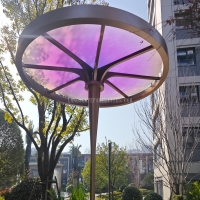Welcome to the website for landscape facilities products and knowledge.
How does the trash can’s base design prevent tipping or movement during use?
A well-designed trash can base plays a crucial role in preventing tipping and unwanted movement during use. Manufacturers employ several key techniques to enhance stability. First, many models feature a weighted bottom, often with reinforced materials like thick plastic or metal, to lower the center of gravity. This makes it harder for the bin to topple, even when overfilled.
Another common solution is the incorporation of non-slip materials on the base surface. Rubberized pads or textured patterns create friction against floors, resisting sliding when the can is bumped or during trash disposal. Some premium designs even use suction technology for added grip on smooth surfaces.
The shape of the base also contributes significantly. Wider bases with flared designs provide better weight distribution compared to narrow-bottomed cans. Certain commercial-grade models include bolt-down options for permanent placement in high-traffic areas.
For outdoor or windy environments, some trash cans feature anchor points or integrated hooks for securing weights. This is particularly effective for lightweight materials like plastic while maintaining easy mobility when needed.
Advanced designs may combine these elements - a weighted core with a rubberized wide base - to create optimal stability without sacrificing aesthetics or functionality. The result is a trash can that stays firmly in place during daily use, preventing spills and maintaining cleanliness in any environment.
By understanding these engineering principles, consumers can select bins with the right base features for their specific needs, whether for a busy kitchen, office space, or outdoor setting.
Related search:

Recommendation
Metal frame with gradient color acrylic combined with high-end shading landscape facilities